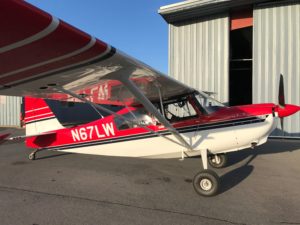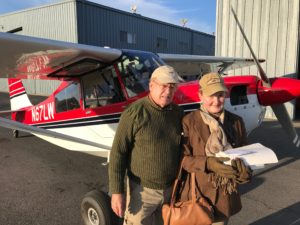Podcast: Play in new window | Download
Yep, you heard me right.
But don’t worry, it’s not for some weird, fear-driven reason.
This is for a good reason… I want you to question the safety of your airplane, so that you will go on a search to find anything that might need some attention. You might be able to do that search yourself, or you might want to grab your A&P, or a fellow aviator, to help you.
Whatever the case, don’t fly around with something like I discovered the other day as I was inspecting a Lycoming IO-360 engine.

If you look closely at the picture, you will notice the center plug is safetied backwards. If you were to put a wrench on the plug and turn it in the loosening direction (left) you would be able to turn it perhaps 1/4 turn. This would be enough to cause a significant fuel leak. This safety wiring on the plug, is beautiful, but it’s backwards!
What about you? Have you taken a close look at your airplane’s engine recently? If not, it might be a good time to take a look. And one thing to look for, is to confirm that all safety wiring is installed properly, in such a way that not only does it look nice, (which is important in my opinion,) but it is actually done correctly so that the component or piece of hardware, cannot become loose. You certainly do not want to be flying along and have something shake loose on your engine!
I know you want to fly safely and confidently, knowing you’ve done everything you can to make that happen.
But what if you’re not sure what to look for? What if you lack the confidence to determine if all the safety wiring is done properly?
If this is your situation, I can absolutely help you. I have created a tool to help airplane owners just like yourself, to develop the ability, not only to evaluate safety wiring to determine if it’s correct or not, but to also develop the personal skill to perform safety wiring. “Safety Wire Like A Pro!” is a powerful video tutorial course, designed to walk airplane owners through all the necessary steps, to perform safe and effective safety wiring, on a variety of components, every time. It will also give you the ability to evaluate safety wiring, using my three-part criteria. You’ll know how to determine when safety wire is done properly, when it’s done poorly, when it’s backwards, and when it’s just ugly.
But more importantly, you’ll be able to install safety wiring yourself in a way that you know for sure it is done correctly.
It took me years to get really good at this skill. But I’ve boiled it down into a clear-cut, easy to follow, set of tutorial videos. If you go through the course, and practice your skills, you can learn quickly, what it took me a long time to learn.
If you’ve never done any safety wiring at all, this course is for you.
Or, if you’ve done a little safety wiring, this course is for you also, and has the very real potential to help you get much better at it.
And if you’ve done a lot of safety wiring, this course is still for you, because I’m guessing you may discover something you were not aware of, that will be a difference maker for you, and take your safety wiring skill to a new level.
So what are you waiting for?
Go sign up now, for “Safety Wire Like A Pro!” and take your safety wiring to a new level.
Don’t wait, because from now until the end of February, you can get a $30 discount on the course. The normal price is $97, but until the end of February, you can get it for $67 by using the code “WIRINGCOURSE” at checkout.
I look forward to seeing you in the course,
Dean Showalter









Recent Comments